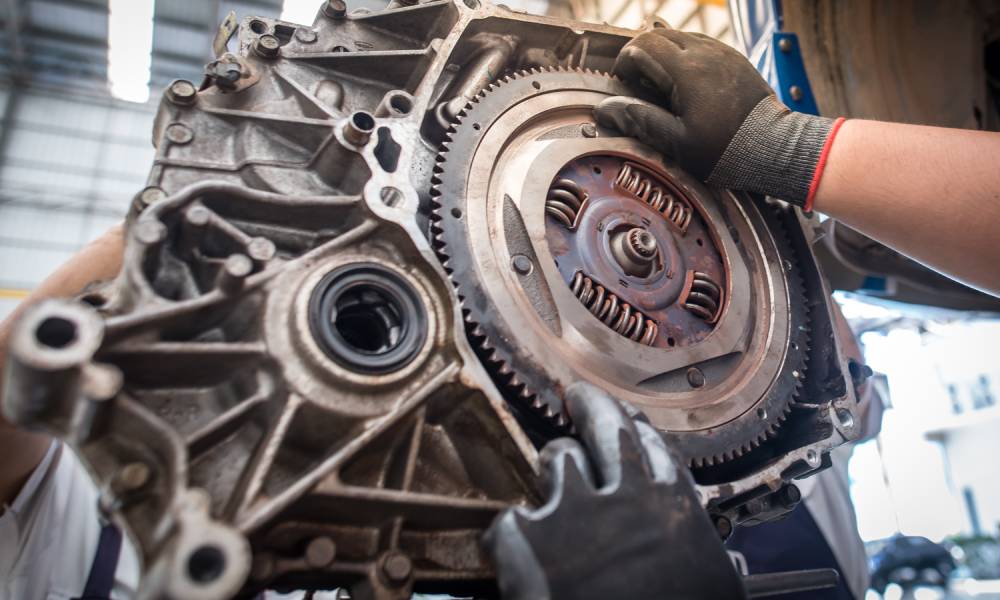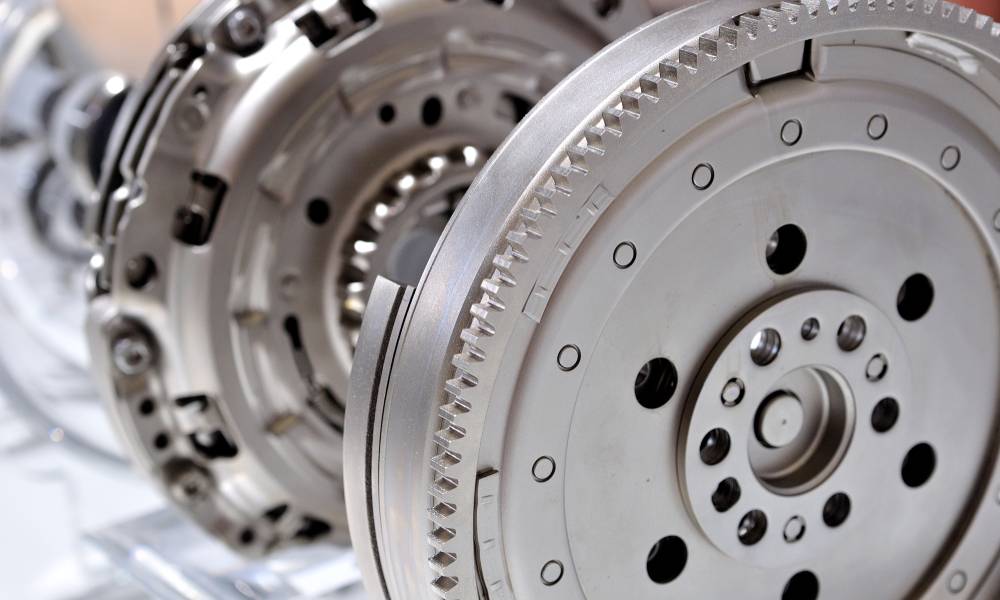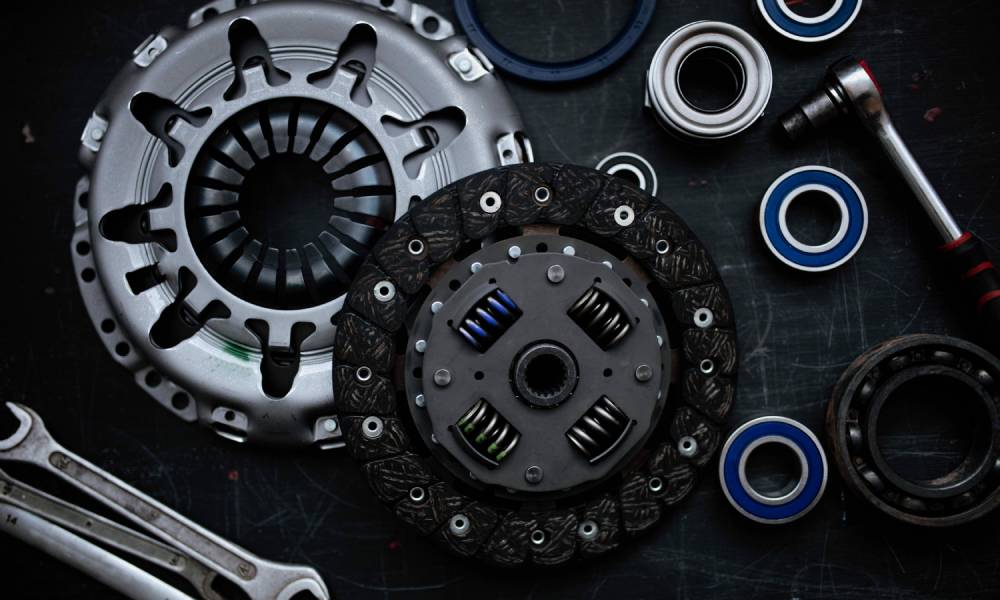Differences Between a Steel and Aluminum Flywheel

For automotive enthusiasts and pro racers, the quest for peak vehicle performance is etched into the very fiber of their passion. Central to this pursuit is an understanding of the components that drive efficiency and power in their mechanical steeds.
Among these critical components is the flywheel. We can’t overstate its role in managing energy and ensuring smooth transitions. The two most common flywheel types are billet steel and billet aluminum; what distinguishes them? We’ll break down the key differences between steel and aluminum flywheels that drivers should know before deciding what’s best for their cars.
The Importance of Flywheels in Automotive Performance
Before we delve into the key distinctions of flywheel materials, you might wonder why these components are so integral to vehicles. At the very core of your vehicle’s drivetrain lies the flywheel, acting as a guardian of rotational energy. This essential component plays a pivotal role in smoothing out the transfer of power to the transmission.
The flywheel manages the engine’s pulsations, ensuring each burst of energy translates into a steady thrust forward. The flywheel’s material composition is not just a matter of engineering choice; it is a significant determinant of your vehicle’s overall performance, affecting everything from how smoothly it accelerates to its handling and responsiveness on the road. By carefully balancing these forces, the performance flywheel delivers a driving experience that is both efficient and exhilarating, making it indispensable to the vehicle’s mechanical heart.

Steel Flywheels, Explained
Crafted from high-grade steel, billet steel flywheels are the epitome of durability and resilience. Their substantial weight is not without advantage; it serves as a reservoir for rotational energy, lending itself to improved traction and a more consistent power output in high-torque scenarios. Steel flywheels are ideal for vehicles that grapple with the rigors of drag racing or endure the relentless demands of off-road challenges. They offer a distinct edge in maintaining momentum.
However, the very characteristic that defines their strength—their weight—also contributes to their limitations. The additional mass requires more energy to initiate movement, slightly dampening acceleration times and requiring the engine to work harder, which may not be desirable.
Aluminum Flywheels, Explained
In the pursuit of agility and swift response, aluminum flywheels emerge as the challenger to their steel counterparts. Engineered from aviation-grade aluminum, these flywheels stand out for their lightweight construction, a quality that dramatically reduces the inertia the engine must overcome. This reduction directly translates into faster acceleration, making aluminum flywheels a favorite among track racers and those seeking the edge in time-attack events or circuit racing.
Beyond acceleration, aluminum flywheels offer superior heat dissipation, a crucial factor in maintaining performance stability during sustained, high-speed endeavors. Yet, for all their benefits, aluminum flywheels present trade-offs in durability and require frequent inspections and potential replacements, given their susceptibility to wear.
Key Differences Between Steel and Aluminum Flywheels
Performance
When exploring the differences between steel and aluminum flywheels, it’s crucial to weigh their effects on a vehicle’s performance. Steel flywheels are known for their robustness and guarantee consistent power delivery throughout the driving experience. However, this benefit comes with a potential downside: the heavy nature of steel might hinder acceleration rates.
On the other hand, aluminum flywheels stand out for their quick responsiveness, enhancing acceleration due to their lightweight nature. This advantage allows drivers to experience swift shifts in speed; however, aluminum may not match the longevity and wear resistance of steel.
Durability
When it comes to durability and longevity, steel is the reigning champion. Thanks to its hardy construction, steel flywheels can endure intense pressure for prolonged periods without exhibiting any signs of wear or deterioration. This remarkable resilience makes it ideal for automotive applications where longevity is paramount.
Cost
Because of their high-quality material and complex manufacturing processes, aluminum flywheels often come with a high price tag. These flywheels are so desirable because of their light weight and performance benefits, making them a premium choice for anyone willing to invest.
In contrast, steel flywheels present a more cost-effective solution. They are more affordable due to the lower cost of materials and simpler production methods. Additionally, steel flywheels are more readily available in the market, making them easier to find and replace.
Automotive Applications
The suitability of materials for different automotive applications is a crucial consideration in their selection process. Materials like steel, with its heft and reliability, are particularly well-suited for high-torque applications, where the demand for sustained power output is essential. For example, durability is a big factor in heavy-duty vehicles and machinery.
On the other hand, automotive applications that require high levels of speed and efficiency, such as in racing disciplines, benefit significantly from the lightweight nature of aluminum. This material’s ability to facilitate rapid gear changes makes it indispensable in racing, where every fraction of a second counts toward vehicle performance.

Other Flywheel Materials
While steel and aluminum are top choices for flywheels, alternative materials have unique properties that cater to various needs. Ductile iron, for instance, offers a middle ground between steel’s durability and aluminum’s light weight, providing better wear resistance than aluminum without the heft of steel.
Another noteworthy material is the chromoly alloy—a combination of chromium and molybdenum—known for its exceptional strength-to-weight ratio. Chromoly flywheels are superior choices for drivers prioritizing both performance efficiency and durability in extreme conditions.
The exploration of advanced composite materials is on the rise, with research into carbon fiber and other polymers offering the potential for high-strength, ultra-lightweight flywheels that could revolutionize automotive performance.
Choosing the Best Flywheel Material for Your Vehicle
Choosing the ideal flywheel material for your vehicle boils down to having a clear understanding of your performance needs and typical driving conditions. If you prioritize acceleration and agility, particularly for competitive racing or agility-focused driving, an aluminum flywheel’s lightweight characteristics can offer the quick response and speed enhancement you seek.
However, if your driving adventures involve daily driving or rugged terrains or require a high power delivery—such as off-roading or heavy-duty applications—a steel flywheel’s durability and consistent performance might align more with your needs. Consider the nature of your usual driving scenarios, your performance expectations for your vehicle, and the expected longevity of the flywheel.
Find the Ideal Flywheel for Your Vehicle at Clutch Masters Industries
We hope our guide has shown you the key distinctions to consider when choosing a flywheel material for your vehicle. Whether you’re interested in a steel or aluminum flywheel for your car, Clutch Masters Industries and our wide inventory of flywheels can help. Browse our selection of aftermarket automotive flywheels online, or contact our staff to learn more about our flywheels and speak with a clutch expert about what’s best for your vehicle.


